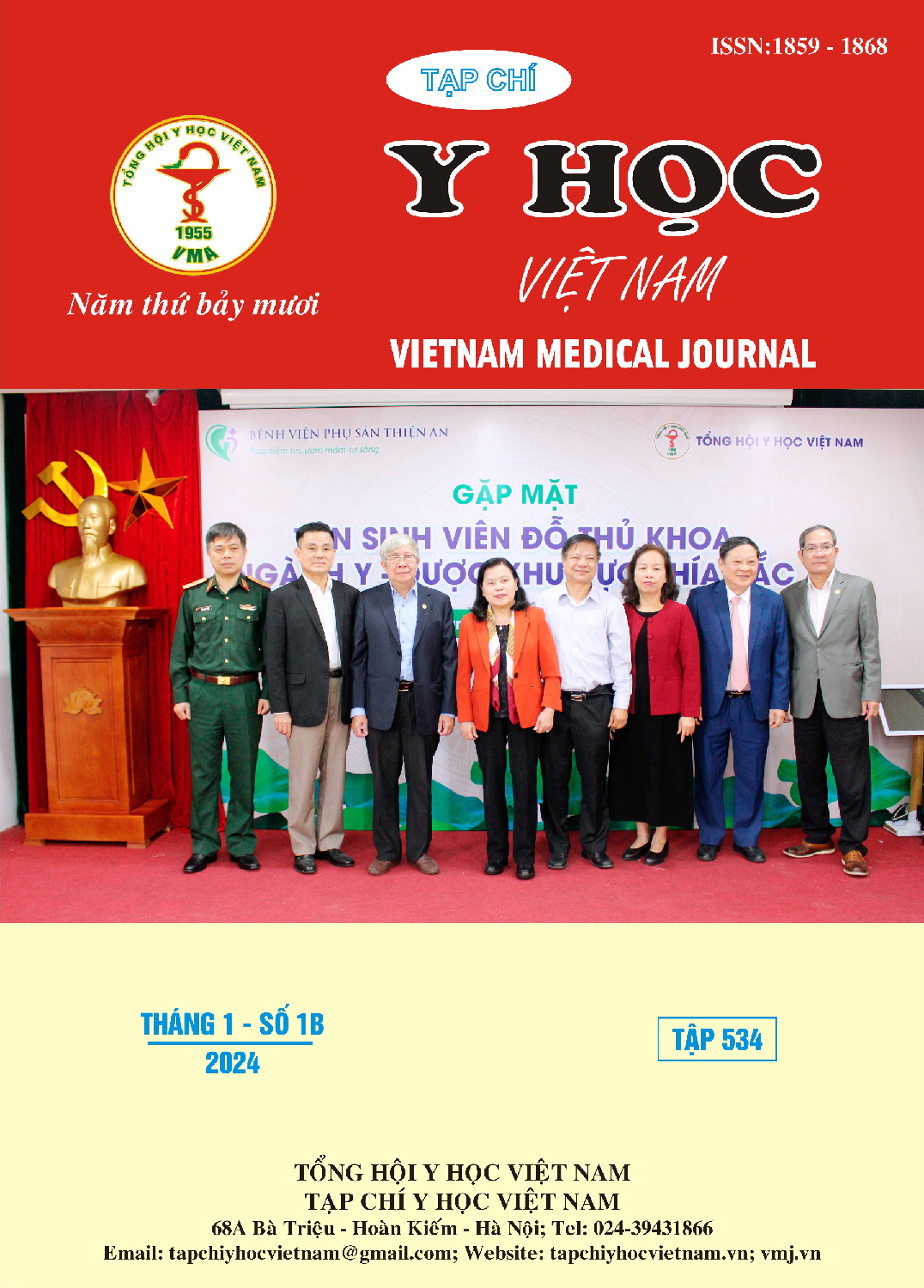CLINICAL AND PARACLINICAL CHARACTERISTICS IN PATIENTS WITH ACUTE KIDNEY INJURY FOLLOWING ACUTE PANCREATITIS
Main Article Content
Abstract
Aim: Describe clinical and paraclinical characteristics in patients with acute kidney injury following acute pancreatitis. Methods: Cross-sectional study of 219 patients with acute pancreatitis divided into 2 groups: 51 patients with acute kidney injury following acute pancreatitis (AP-AKI) and 168 patients acute pancreatitis without acute kidney injury (AP-non-AKI). Result: - There are 51/219 AP-AKI. The rate of financial intervention in stages 1, 2 and 3 is 47.1%; 33.3% and 19.6%. Men accounted for a higher proportion than women in both the study groups of AP-AKI (88.2% men vs. 11.8% of women) and AP non AKI (80.4% of men vs. 19.6 women). - The AP-AKI had higher rates of abdominal distension, respiratory rate, SpO2, temperature, prothrombin rate (seconds), INR and lower prothrombin rate (%) with statistical significance (p<0.05) compared to the group of AP non AKI. Blood biochemistry: Glucose, Urea, Creatinine LDH, GOT, Bilirubin, CRP and Lactate of the group of AP-AKI had a statistically significant higher median value than the group of AP non AKI. Albumin, Sodium, Potassium, Chlorine, Calcium TP and glomerular filtration rate of the group of patients with AP-AKI were statistically significantly lower than the group AP non AKI. The group of AP-AKI had lower pH, pCO2, HCO3- and higher pO2 than the group of AP-non-AKI, the difference was statistically significant with p < 0.01; The P/F index between the 2 study groups did not have a statistically significant difference. - Abdominal CT scan, Balthazar E were the highest rate in both study groups, the difference according to the Balthazar scale and CTSI score between the 2 groups was statistically significant, the rate of acute necrotizing pancreatitis was not different significant between the 2 groups. The scores of APACHE II, SOFA, IMRIE, BISAP, MARSHAL of the AP-AKI were statistically significantly higher than the AP non AKI. - There were 3/51 (5.9%) had poor outcome. Conclusion: Acute kidney injury is a dangerous complication of acute pancreatitis.
Article Details
References
2. P. A. Banks, T. L. Bollen, C. Dervenis, et al. (2013), "Classification of acute pancreatitis--2012: revision of the Atlanta classification and definitions by international consensus", Gut. 62(1): 102-11.
3. A. Khwaja (2012), "KDIGO clinical practice guidelines for acute kidney injury", Nephron Clin Pract. 120(4): c179-84.
4. Phan Trung Nhân (2023), "Yếu tố liên quan đến viêm tụy cấp mức độ nặng ở bệnh nhân có điểm BISAP thấp", Tạp chí Y học Việt Nam. 520(1B).
5. S. Wu, Q. Zhou, Y. Cai, et al. (2023), "Development and validation of a prediction model for the early occurrence of acute kidney injury in patients with acute pancreatitis", Ren Fail. 45(1): 2194436.
6. Trần Minh Tuấn, Trần Hà Hiếu, Đỗ Thanh Tùng, et al. (2023), "Giá trị của thang điểm Bisap trong tiên lượng mức độ nặng ở bệnh nhân viêm tụy cấp điều trị tại Bệnh viện Quân y 175", Tạp chí Y học Quân sự(363): 20-24.


